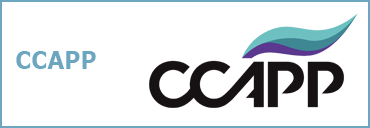Share

“Arthur is an addict, a loving flawed parent, a kind soul, and . . . stuck. Should . . . can I keep trying?” asks Nancy, his wife.
I frequently have either individuals or couples trying to figure out if they should keep trying or quit, divorce, or separate. I ask these clients four questions. There may be infidelity, disconnection, and alcohol or drug abuse and/or addiction. These four questions allude to hope and practicality about individuals and their partners and/or addicts.
I ask Nancy the four questions first about herself and then about Arthur, so four questions thus become eight. “Yes” answers are hopeful. However, realistically, some answers may be “No” or “Maybe.” If Arthur is there, then the eight questions are answered by both, resulting in sixteen total questions.

Nancy answers four questions:
- Can I (Nancy) change or grow? Do I have the capacity (i.e., the will) to change or grow?
- Can I change or grow? Do I have the ability or skills to change or grow (or can I acquire them)?
- Is it worth it for me to change?
- Do I have the courage and energy to change or grow? Am I going to be able to deal with the pain it takes to change?
Continuing, Nancy answers what she thinks about her partner Arthur:
- Do I (Nancy) think my partner (Arthur) can change or grow? Does he have the capacity (i.e., the will) to change or grow?
- Do I think Arthur can change or grow? Does he have the ability or skills to change or grow?
- Do I think Arthur feels it is worth it for him to change?
- Do I think Arthur has the courage and energy to change or grow? Is he able to deal with the pain it takes to change?
Four questions about herself, plus four about Arthur, equal eight answers of “Yes,” “No,” or “Maybe.” When Arthur is in therapy too, he gets asked the same questions, giving sixteen answers.
Sometimes one or both will answer, “I don’t know.” That usually means “Maybe,” which is normal—both parties may be unsure about being together. However, to build or heal the relationship (both) or keep trying (Nancy), both sides need to move towards all “Yes” answers. The first goal is for both clients to find confidence in their respective capacities to grow and change (e.g., get into recovery), to find it worthwhile to change, and to find courage and energy. If the relationship moves to each partner having clear, firm, “Yes” answers to every question (i.e., sixteen definitive “Yes” answers), their process is in a fundamentally different place and has a different process.
However, Nancy may not trust that Arthur or she could change. Arthur might not know if it was going to be worth it to do the hard work to grow, heal, and work on recovery. Both may lack the courage or the energy to emotionally work through everything, already feeling exhausted or defeated. Without “Maybe’s” becoming definitive “No’s” or “Yes’s,” they cannot proceed in any way with clarity. They may still separate, but doubt and regret may linger indefinitely. If continuing together, they will lack confidence that the relationship will grow or heal.
The therapeutic goal becomes working so “Maybe” answers become definitively either “Yes” or “No.” One might give “Maybe” or “Yes” answers despite having doubts or to hide definitive “No” answers. This is deception (or self-deception) for any number of reasons.
With sixteen affirmative answers, clients relax. While much healing, work, and problem solving remains, these affirmatives enable them to commit to continuing the process of relationship growth. However, if eventually there is one definitive “No” answer, the relationship is done or the individual should quit—a brutal conclusion. Even if there are fifteen “Yes” answers, one “No” means “STOP.” It means there is no fulfilling relationship or ability/willingness to be around them. Addicts may get into recovery, but one may choose not to be involved anymore. What happens next? Well . . . that is another process!
This process is not about addicts being able to get into recovery or whether partners, families, or friends may be critical contributors to their recovery, but about those people making sound decisions about whether they have or can find the capacity, will, worthiness, energy, and courage to continue being with someone in their journey through addiction . . . or not.

Ronald Mah, PhD, LMFT
Ronald Mah, PhD, LMFT, is the author of Difficult Behavior in Early Childhood (2006), The One-Minute Temper Tantrum Solution (2008), Getting Beyond Bullying and Exclusion (2013), and twenty e-books on therapy and couples’ therapy available at www.smashwords.com. He has developed DVDs on child development and behavior and has been a trainer for addiction treatment conferences with CCAPP, community mental health, severe emotional disturbance school programs, and vocational and welfare-to-work programs.











 Counselor Magazine is the official publication of the California Association of Addiction Programs and Professionals (CCAPP). Counselor offers online continuing education, article archives, subscription deals, and article submission guidelines. It has been serving the addiction field for more than thirty years.
Counselor Magazine is the official publication of the California Association of Addiction Programs and Professionals (CCAPP). Counselor offers online continuing education, article archives, subscription deals, and article submission guidelines. It has been serving the addiction field for more than thirty years.